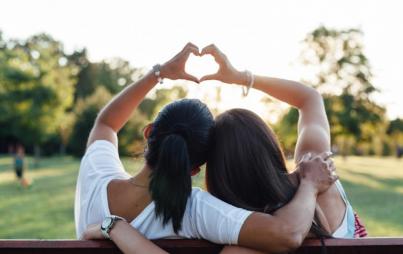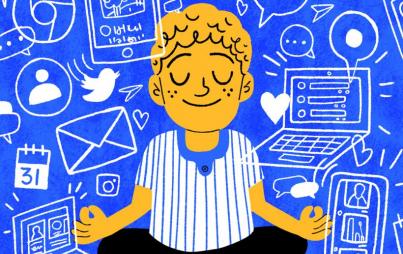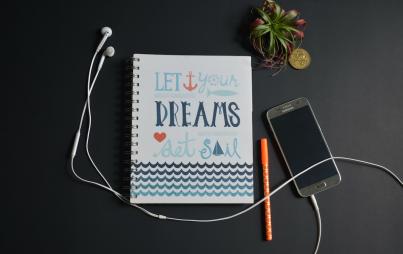
smaller, less glamorous fears can be much more important to face than the huge, exciting ones. They can be scarier too, and much more complex.
The constant anxiety plaguing my inner life taught me to play it safe in my external life.
Over the course of the past few years, I conquered a few major Fears-with-a-capital-F.
My boyfriend and I moved across the country to a city where we knew no one. I quit a job that was my sole source of income, without a firm backup plan. I traveled to Iceland and Switzerland alone.
On the Face your fears/Live your best life/Take the leap and the net will appear spectrum, these feats all rank pretty high: They’re big, glamorous, and outwardly impressive. I wrote many inspiring essays about them.
Gathering the courage to do these things changed my perception of who I am and what I can do. I came to think of myself as something I never had before: brave.
Since I was very young, fear has been a constant presence in my life. Even in elementary school, anxiety often kept me up all night. Worries raced through my head about everything from an earthquake to a home invasion to all my family members simultaneously dying in the night from a some sudden, ravaging illness.
In second grade, I arrived at school every morning looking like a factory foreman getting off a tough night shift: jittery, loopy, with bags under my eyes.
My fears — rational and irrational, big and small — felt like a full-time job.
The constant anxiety plaguing my inner life taught me to play it safe in my external life. I chose a college all my friends were going to, and then, when that one proved unbearable, I chose one closer to home. I didn’t take many chances when it came to interesting classes or jobs that were out of my comfort zone.
I was scared to own my feelings. Especially the not-so-pretty ones.
It wasn’t until I discovered traveling that I made the decision to stop letting fear rule my life. I was terrified of flying, but I wasn’t going to let that fear keep me from seeing the world. With every flight I took, fear abated and was replaced with exhilaration, openness.
I changed my entire outlook: From then on, being afraid wasn’t a reason not to do something, it was a reason to do it.
From there, I started checking other fears off my to-do list with abandon. I took a flying lesson. I sang in front of people. I hung my art in a gallery show. I signed up for dance classes. By the time my boyfriend and I had sold almost everything we owned to move to a new city, I was starting to think I wasn’t afraid of anything anymore.
Then, one day, I was flipping through a magazine and found a short article written by an adventure travel writer, about what really scared her.
This writer had gone big-wave surfing around the world, backpacked her way through remote landscapes, and done all kind of brave, amazing, easily-Instagrammable feats. Thanks to this roster of daring deeds, she thought she was fearless.
That is, until she was presented with the opportunity to adopt a shelter dog. She wanted to do it, but found herself gripped by levels of fear and anxiety she hadn’t felt in a long time. She’d managed to face her fears of physical danger and grand adventure, but in the meantime, latent fears simmered unchecked just below the surface: fear of commitment, fear of not being nurturing enough, fear of failure.
For this woman, riding a jet ski into an 80-foot wave was no big deal. The prospect of bringing a puppy into her life? Terrifying.
No one triumphantly Instagrams themselves after an honest conversation with their mom or a therapeutic cry-fest.
Her words resonated with me so strongly that I had to put the magazine down and take a deep breath. I’d been so busy patting myself on the back for conquering my big fears, I failed to acknowledge that the types of things that scare me had shifted. A lot of the obvious stuff didn’t bother me anymore — but what about all the smaller, more personal things that still scared the living shit out of me?
I was scared to own my feelings. Especially the not-so-pretty ones.
I was scared to try to patch up old wounds with certain family members.
I was scared of admitting to myself how much I had let my job as a writer define me.
I was scared of getting to the third or fourth hangout with a new friend — you know, when the novelty period is starting to wear off and they’re finally getting to know the REAL you.
These fears are never listed next to skydiving and solo travel on bucket lists. No one triumphantly Instagrams themselves after an honest conversation with their mom or a therapeutic cry-fest.
But these smaller, less glamorous fears can be much more important to face than the huge, exciting ones. They can be scarier too, and much more complex. If you want to skydive, you say a prayer and jump out of a plane — but if you want to repair damaged relationships or be more authentic in your social life, well, it’s hard to even know where to start.
Our culture is big on facing your fears when those fears are easily-definable and great for a photo opp. I think many of us, including me, have become addicted to checking off scary/impressive things from our life to-do lists, as publicly as possible (what up, Instagram?), conveniently ignoring the fact that many of the bravest acts happen in quiet, private moments. Many of our most courageous feats are not singular feats at all, but lifelong processes.
They don’t involve buying plane tickets or crossing finish lines. They’re often as simple as this: Today I was a little braver than I was yesterday.
I’ll always be grateful for the paradigm shift that came along with facing my more dramatic fears, but I never want to become complacent or overly simplistic in my definition of bravery.
I’ve taken the big leaps — and I’m glad I did — but these days, it’s the small steps that really make my heart race. The steps toward facing fears that are messy, personal, hard to measure, and difficult to document.
The stuff that really matters.








